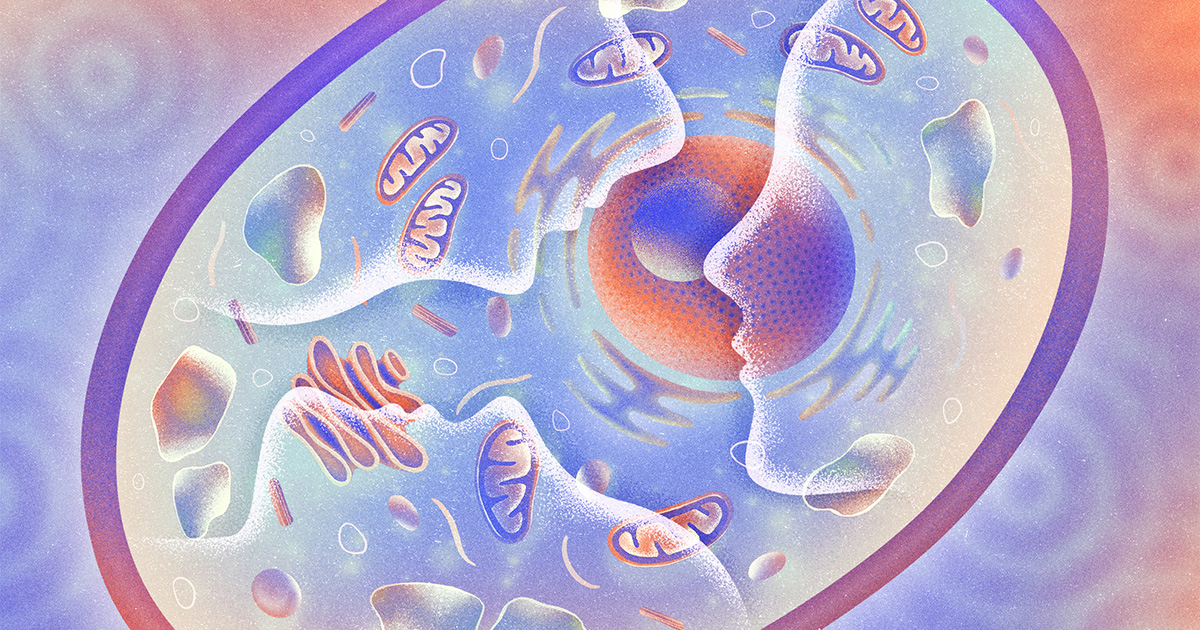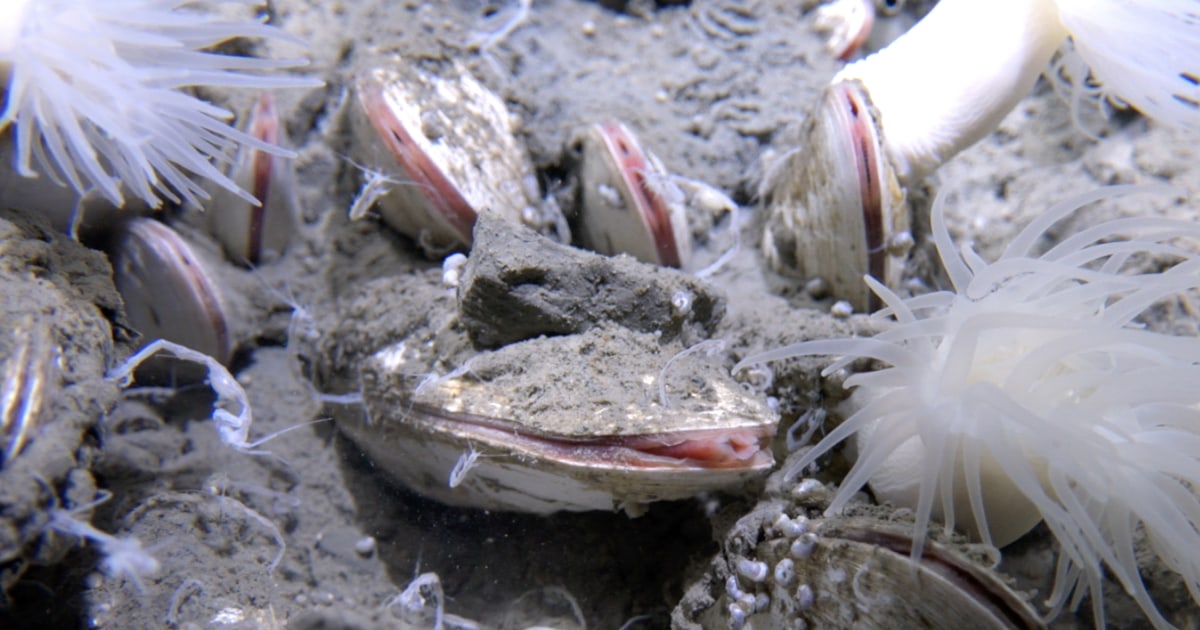cm0002@lemmy.world
Posts
-
Physicists Superheated Gold to Hotter Than the Sun's Surface and Disproved a 40-Year-Old IdeaThis post did not contain any content. -
What Can a Cell Remember?This post did not contain any content.
What Can a Cell Remember? | Quanta Magazine
A small but enthusiastic group of neuroscientists is exhuming overlooked experiments and performing new ones to explore whether cells record past experiences — fundamentally challenging what memory is.

Quanta Magazine (www.quantamagazine.org)
-
Rhino horns made radioactive to foil traffickers in South African projectA South African university has launched an anti-poaching campaign to inject the horns of rhinoceroses with radioactive isotopes that it says are harmless for the animals but can be detected by customs agents.
Under the collaborative project involving the University of the Witwatersrand, nuclear energy officials and conservationists, five rhinos were injected in what the university hopes will be the start of a mass injection of the declining rhino population, which they are calling the Rhisotope Project.
Last year, about 20 rhinos at a sanctuary were injected with isotopes in trials that paved the way for Thursday’s launch. The radioactive isotopes even at low levels can be recognised by radiation detectors at airports and borders, leading to the arrest of poachers and traffickers.

Rhino horns made radioactive to foil traffickers in South African project
Isotopes can be detected at airports and borders even in large containers and are harmless to the animals
the Guardian (www.theguardian.com)
-
Mary K. Gaillard, 86, Physicist Who Probed the Subatomic Universe, DiesPaywall Bypass Link https://archive.is/e6ugQ
-
Fields of worms and snowy microbial mats: Deep-sea submersible discovers flourishing ecosystem in the ocean's deepest trench zone, where documentation of such marine communities is exceptionally rareThis post did not contain any content.
Fields of worms and snowy microbial mats: Deep-sea submersible discovers flourishing ecosystem
Bottom dwellers have never been more spectacular

NBC News (www.nbcnews.com)
-
Building Blocks of Life in Deep Space Could Mean Life Extends Further Than Once ThoughtThis post did not contain any content. -
Mounting Pressure in the Tintina Fault Could Mean Dangerous EarthquakesThis post did not contain any content. -
New device converts plastic waste into fuel using catalyst-free pyrolysisThis post did not contain any content. -
Tiny artificial cells maintain 24-hour cycles like living organismsThis post did not contain any content. -
Yellowstone's Aspen Forests Are Already Responding to The Return of WolvesThis post did not contain any content. -
Researchers create safer nonstick surface, cutting use of 'forever chemicals'This post did not contain any content. -
Coherent spectroscopy with a single antiproton spinScientists at CERN’s BASE collaboration achieved the first-ever coherent spectroscopy of a single antiproton spin, keeping an antiproton oscillating between quantum spin states for 50 seconds[^1]. This breakthrough, published in Nature on July 23, 2025, marks the first demonstration of an antimatter quantum bit (qubit)[^2].
The team used electromagnetic Penning traps to isolate and manipulate individual antiprotons, achieving spin inversion probabilities above 80% during the coherent oscillations[^3]. By suppressing decoherence mechanisms that previously limited precision, they performed quantum measurements with transition linewidths 16 times narrower than previous experiments[^4].
“This represents the first antimatter qubit and opens up the prospect of applying the entire set of coherent spectroscopy methods to single matter and antimatter systems in precision experiments,” said BASE spokesperson Stefan Ulmer[^5]. While the antimatter qubit won’t be used for quantum computing, it enables ultra-precise tests of matter-antimatter symmetry[^6].
The next phase involves BASE-STEP, which will transport antiprotons to calmer magnetic environments. “Once it is fully operational, our new offline precision Penning trap system could allow us to achieve spin coherence times maybe even ten times longer than in current experiments,” said lead author Barbara Latacz[^7].
[^1]: Nature (@nature.com) - Nature research paper: Coherent spectroscopy with a single antiproton spin
[^2]: CERN - Breakthrough: First Coherent Spectroscopy with a Single Antiproton Spin
[^3]: Heinrich Heine University - News
[^4]: Nature - Coherent spectroscopy with a single antiproton spin
[^5]: CERN - A quantum leap for antimatter measurements
[^6]: Interesting Engineering - Scientists trap antiproton for 50 seconds in first antimatter qubit
[^7]: Space.com - Scientists just made the 1st antimatter ‘qubit.’
-
Chinese team captures rare quantum friction effect in folded ultra-thin sheets of grapheneThis post did not contain any content. -
Nature: A generic non-invasive neuromotor interface for human-computer interactionThis post did not contain any content. -
Fat on plastic: Metabolic consequences of an LDPE diet in the fat body of the greater wax moth larvae (Galleria mellonella)Recent research has revealed how larvae of the greater wax moth (Galleria mellonella) metabolize low-density polyethylene (LDPE) plastic. The larvae maintain lipid reserves similar to those fed their natural honeycomb diet, even when consuming only plastic[^21].
The wax moth larvae break down plastic through enzymes in their saliva called PEases (Demetra and Ceres), which can oxidize and depolymerize polyethylene within hours at room temperature[^9]. This process occurs without requiring gut bacteria, challenging earlier theories about microbial degradation[^11].
Studies show the larvae’s fat body plays a key metabolic role - when fed LDPE, they exhibit enhanced fatty acid metabolism while maintaining normal intestinal function[^27]. This suggests the wax moth larvae have evolved specialized mechanisms to process plastic compounds similarly to their natural wax diet.
-
A biocompatible Lossen rearrangement in Escherichia coliScientists have achieved a breakthrough by performing the Lossen rearrangement - a chemical reaction previously confined to harsh laboratory conditions - inside living E. coli bacteria[^1]. The reaction, catalyzed by phosphate naturally present in cells, converts hydroxamic acids into primary amines under mild biological conditions[^2].
The research team demonstrated this biocompatible chemistry by transforming polyethylene terephthalate (PET) plastic waste into para-aminobenzoic acid (PABA), an essential nutrient for bacterial growth[^3]. By introducing genes from mushrooms and soil bacteria, they further engineered E. coli to convert PABA into Paracetamol with 92% yield in under 24 hours[^4].
“People don’t realise that paracetamol comes from oil currently,” said Professor Stephen Wallace from the University of Edinburgh. “What this technology shows is that by merging chemistry and biology in this way for the first time, we can make paracetamol more sustainably and clean up plastic waste from the environment at the same time.”[^5]
[^1]: Nature Chemistry - A biocompatible Lossen rearrangement in Escherichia coli
[^2]: Chemistry World - Bacterium engineered to produce paracetamol from plastic bottle waste
[^3]: Sci.News - Common Gut Bacterium Can Turn Everyday Plastic Waste into Paracetamol
[^4]: BioEngineer - Biocompatible Lossen Rearrangement Achieved in E. coli
[^5]: The Guardian - Scientists use bacteria to turn plastic waste into paracetamol
-
Ultra-wide-field fundus photography and AI-based screening and referral for multiple ocular fundus diseasesThis post did not contain any content. -
The Simple Algorithm That Ants Use to Build BridgesThis post did not contain any content. -
Life found in underwater brine lakesThis post did not contain any content. -
Dual carbon sequestration with photosynthetic living materialsETH Zurich researchers have developed a groundbreaking “living material” that actively captures carbon dioxide from the atmosphere through two mechanisms: biomass production and mineral formation[^1][^2].
The material combines cyanobacteria (photosynthetic bacteria) embedded within a printable hydrogel matrix. The cyanobacteria convert CO2 into biomass through photosynthesis while simultaneously triggering the formation of solid carbonate minerals - a process called microbially induced carbonate precipitation (MICP)[^1].
Key achievements of the material include:
- Sequestered 2.2 mg of CO2 per gram of hydrogel over 30 days
- Captured 26 mg of CO2 per gram over 400 days in mineral form
- Maintained viability for over one year
- Required only sunlight and artificial seawater to function
- Can be 3D printed into various structures[^1]
The research team demonstrated practical applications by creating:
- A 3-meter high tree-trunk structure at the Venice Architecture Biennale that can bind 18kg of CO2 annually
- Building facade coatings that could capture carbon throughout a building’s lifecycle
- Lattice structures that passively transport nutrients through capillary action[^2]
“As a building material, it could help to store CO2 directly in buildings in the future,” said Mark Tibbitt, Professor of Macromolecular Engineering at ETH Zurich[^2].
The material represents a low-maintenance, environmentally friendly approach to carbon capture that operates at ambient conditions using atmospheric CO2, contrasting with industrial methods requiring concentrated CO2 sources and controlled conditions[^1].
[^1]: Nature Communications - Dual carbon sequestration with photosynthetic living materials
[^2]: ETH Zurich - A building material that lives and stores carbon